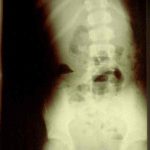Blunt injury to the carotids or vertebrals (BCVI) is a little more common than originally thought, affecting about 1% of blunt trauma patients. We have many tools available to help us diagnose the problem: duplex ultrasound, CT angiography (CTA), MR angiography (MRA), and even good old conventional 4 vessel angiography.
But which one is “best?” This is a tough question, because there is always some interplay between clinical accuracy and cost. The surgical group at the Medical College of Wisconsin – Milwaukee did a nice job teasing some answers from existing literature on the topic. The authors tried to take a comprehensive look at costs, including money spent to prevent stroke, the cost of complications of therapy, and the overall cost to society if the patient suffers a stroke.
Here are the factoids:
- For patients at risk for BCVI, the stroke rate is 11% without screening, 6% with duplex ultrasound screening, 4% with MRA, and 1% with either CTA or conventional angiography
- From a societal standpoint (includes the lifetime costs of stroke for the patient), CTA is the most cost effective at $3,727 per patient
- From the hospital standpoint (does not include lifetime cost), no screening is the most cost effective, but has the highest stroke rate (11%)
- CTA prevents the most strokes, and costs about $10,000 per patient while decreasing societal costs by about $32,000 per patient screened
Bottom line: The “best” test for patients at risk for blunt cerebrovascular injury is the CT angiogram. It minimzes the stroke rate, and provides information on all four vessels supplying the brain, which is probably why the duplex ultrasound has a higher miss rate (can’t see the vertebrals or into the skull). But how do you decide who is at risk for this problem. Tune in tomorrow!
Reference: Screening for Blunt Cerebrovascular Injuries is Cost-Effective. J Trauma 70(5):1051-1057, 2011.

